Finding solutions together: a participatory approach to explore digital technology as an enabling strategy for empowering women micro-entrepreneurs from marginalized communities in Nepal
During the national level workshop in Nepal with women entrepreneurs held on 29th Sept 2018, lack of information and limited capability to use recent technologies for enterprise growth was reported as one of the major reasons for limited business competitiveness of women entrepreneurs (FNCCI, Nov 12, 2018). The theme of this year’s International Women’s Day, “DigitALL: Innovation and technology for gender equality” resonates with the need highlighted by women entrepreneurs from all walks of life in Nepal.
Micro, small and medium enterprises contribute about 22% to Nepal’s economy and have created job opportunities for about 2.3 million people (FNCCI, 2022). These enterprises were severely affected by the COVID-19 pandemic. The pandemic has exposed the gendered vulnerabilities of women-led enterprises due to their limited human, economic, social and political capital. The nature and extent of gender discriminatory practices vary within the different caste/ethnic communities in Nepal, creating varied experiences for women entrepreneurs belonging to different communities.
Researcher Dr. Smrittee K Panta discussing challenges of marginalized women entrepreneurs in the cooperative office in Bardia
In this digital age, technologies such as the Internet of things offer opportunities for women micro-entrepreneurs to access enterprise-related information crucial toward making business decisions and enhancing their competitiveness. Increasingly, digital technology is promoted as a tool for empowering disadvantaged groups and creating inclusive socioeconomic growth. As a part of a LASER PULSE research project, we aim to contribute towards creating an equal digital future by addressing the existing knowledge gaps regarding digital technology adoption behavior of rural Nepalese women micro-entrepreneurs, and tech’s role in empowering them. Findings from the study are being used to co-create strategies that could enhance the capability of women micro-entrepreneurs to use available digital technologies for business growth. The project is currently implemented in two districts, Bardia and Chitwan, by a team of researchers and translation partners from Little Angels’ College of Management, Kathmandu University School of Management and Heifer International Nepal.
Between October-December 2022, the team collected primary data using focus group discussions, in-depth interviews and surveys with members of cooperatives selected in the research sites: 1) Digopan Social Enterprise Women’s Cooperative, Gulariya Municipality, Bardia; 2) Deep Social Enterprise Women’s Cooperative, Kalika Municipality, Chitwan; 3) Chetana Cheli Cooperative, Kalika Municipality, Chiwan. The project selected these cooperatives to include those that benefited from Heifer International’s Bridging the Gender Digital Gap project and the Hariyo Ban Program- II of WWF Nepal. Focus group discussions and in-depth interviews featured both women and men, however, only women micro-entrepreneurs were selected in both research sites for surveys.
In our research sites, women are found to choose enterprises that help them balance their caregiving roles within the family. Most of their enterprises are home-based. Women micro-entrepreneurs are mainly involved in farming and are producing milk, vegetables, meat, etc. for nearby markets. Some women (about 14%) are also involved in the service sector (e.g. selling vegetables/fruits, shops, beauty parlor, etc.). Only one-third of their enterprises are registered, and among the registered enterprises, about 60% are registered in the name of the women themselves. About half of the respondents have experience of more than five years in their enterprise. During a community concept mapping exercise for understanding the localized meaning of women’s empowerment, women expressed education and economic independence as vital aspects of their empowerment. The image of an empowered woman in Nepal is as someone who can manage their time effectively and better take care of their family and children, while engaging in economic activities. Support from family, especially from spouses came as a recurring theme needed for empowerment of both marginalized1 and unmarginalized women.
“Educate men as well, as they need to support women to move ahead”
Chaudhary2 female, Bardia
Survey data indicated that women micro-entrepreneurs are found to have a high level of self-esteem but lower level of social network, mobility and confidence in speaking with people they do not know. Most of the entrepreneurs mentioned that they discuss with their spouses and make decisions jointly. However, most of the final decisions are taken by men. When we defined the head of household as the one who makes final decisions regarding financial matters, 68.5% of respondents reported men as the head of household.
Mobility is necessary for entrepreneurial growth. In the case of women, this is contingent upon the approval of household members, especially their spouse. About 46% mentioned that they need permission to visit the cooperative office and 48% needed permission to go to an agrovet. Most respondents (83%) mentioned the need for permission from household members to attend trainings or participate in exposure visits. The dependence on household members for decision making and mobility are some of the reasons for the emphasis on family support for empowerment by women respondents during FGDs.
Women micro-entrepreneurs with higher influence in decision making regarding use, purchase and sale of smartphones, as well as use of income from their enterprise, are found to have higher intention to adopt digital technology. Among our research participants, about 60% have no or little influence in such decisions. This is problematic, especially in households where 1-2 smartphones are shared by all household members (about 62% of households in our research sites). Among the 360 respondents, only 15 respondents mentioned not having a smartphone at the household level. A majority of respondents (about 70%) reported spending 1-2 hours each day using smartphones, mainly for communication and entertainment purposes, and mostly at evening and night time. Notably, about 80% of respondents use social media for accessing enterprise related information.
Similarly, availability of time is found to be most strongly correlated with the intention of women micro-entrepreneurs to adopt digital technology, followed by availability of help to troubleshoot difficulties using these technologies, and the availability of mobile devices compatible with the digital applications. Moreover, perceived ease of using digital technology and becoming skillful at using it are most strongly correlated with women micro-entrepreneurs’ intention to adopt digital technology. In addition to the above factors, women from marginalized groups are found to be more likely to adopt digital technology if they think their family, neighbors and local leaders are supportive of the use.
Women using GeoKrishi Enterprise in Bardia (Project: Bridging the Gender Digital Gap in Nepal, Heifer International Nepal, USAID) (Photo credit: Heifer International Nepal)
Findings of our baseline study indicate opportunities to capitalize on existing social media exposure for enhancing women micro-entrepreneurs’ access to business related information through digital applications such as GeoKrishi. In a context where women have limited mobility and time constraints, women micro-entrepreneurs engaged in small scale agriculture enterprises are using digital technology to access information related to production technology, business information and networking opportunities.
In our project, we will now be sharing these results with our research participants and local stakeholders. The project intervention will be co-designed by joint team of researchers, translation partners and local stakeholders, particularly women micro-entrepreneurs, to focus on ways to influence the perception of digital applications such as GeoKrishi in terms of ease of use and enhancing the capacity of women micro-entrepreneurs to use digital applications for their enterprise development.
Future initiatives to promote digital technology as a tool for empowering marginalized women micro-entrepreneurs in rural areas should better understand their resource status (including access to and control over use of smartphones), information needs and capabilities while designing the digital platforms and make significant investment in creating a supportive environment for technology use for business (including enhancing women’s skills to use it). Strategies need to be explored to strengthen women’s access to smartphones and other needed digital infrastructure.
For additional information, please contact Dr. Smrittee Panta at smrittee.panta@la.edu.np.
Research team at the cooperative in Chitwan for qualitative data collection
1 For this study, women belonging to so called middle (Janajati) and lower (Dalit) castes are included within the marginalized group and those belonging to so called higher castes (Brahmin/Chhetri) are included as the un-marginalized group
2 Chaudhary: marginalized indigenous ethnic community of lowland of Nepal



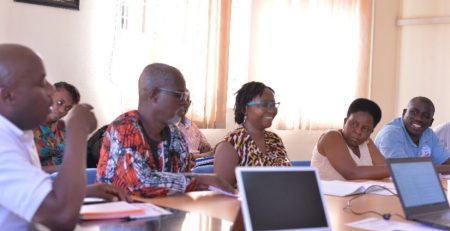
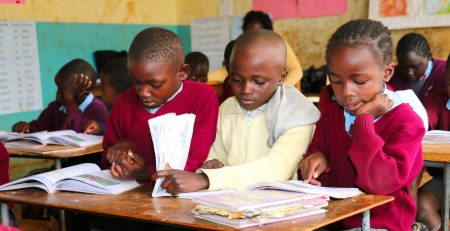
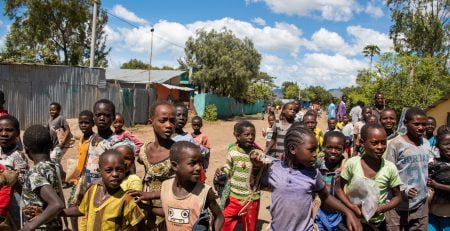
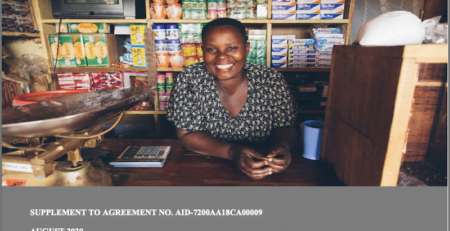
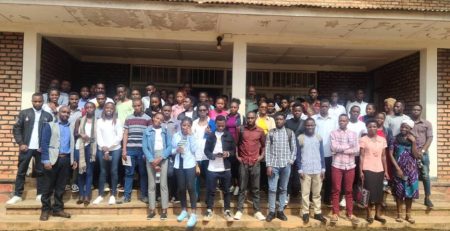

Leave a Reply
You must be logged in to post a comment.